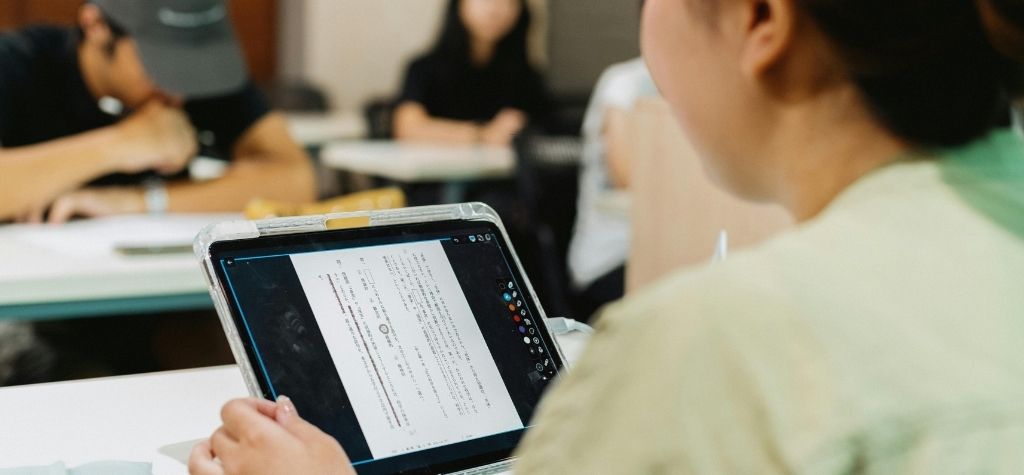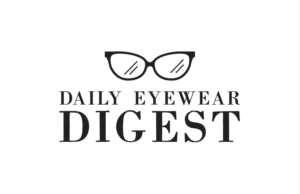A Clear View Isn’t the Whole Picture
If you have ever bragged about having perfect 20/20 vision, you’re not alone. Those simple numbers have long been considered the hallmark of excellent eyesight. But do they tell the whole story? As scientists learn more about the complex visual system, experts now say that seeing 20/20 is more like meeting the minimum requirement rather than achieving perfection. Modern life—especially our obsession with screens—has also introduced new stressors that challenge our eyes in ways the 19th‑century Snellen chart never anticipated.
In this comprehensive guide, we’ll explore why 20/20 isn’t the gold standard anymore. We’ll break down what those numbers actually mean, examine other essential vision skills, and look at how digital devices are changing our eyes. You’ll also learn practical tips to maintain healthy vision in a world where clear sight requires more than a reading chart.
What Does “20/20” Actually Mean?

The Origins of 20/20
The fraction 20/20 describes visual acuity—the sharpness of vision at a distance. During a visual acuity test, you stand 20 feet away from an eye chart and read letters of varying sizes. The first number (20) refers to the test distance, while the second number compares your vision to that of an average person. For example, 20/30 means you can read letters at 20 feet that a person with normal vision can read at 30 feet.
A “Normal” Benchmark, Not Perfection
Many people assume 20/20 vision equals perfect eyes, but ophthalmologists disagree. The University of Iowa Health Care notes that 20/20 simply means you can see at 20 feet what you should see at that distance. It does not account for other important visual functions such as color vision, depth perception, or peripheral awareness. In fact, only about 35 percent of adults have 20/20 vision without correction; another 75 percent achieve it with glasses or contact lenses. That leaves roughly 25 percent of adults who still don’t see very well even with corrections.
The Cleveland Clinic reinforces that 20/20 describes typical clarity, but “it doesn’t mean your vision is perfect”. Some people naturally see better, such as 20/15, while others require correction to reach 20/20. This underscores that 20/20 is a benchmark rather than an ideal, and focusing solely on it can overlook other aspects of eye health.
Why 20/20 Isn’t the Gold Standard
Other Visual Skills Matter
A high score on a Snellen chart says little about how you perceive the world under different conditions. The Cleveland Clinic lists several critical aspects of vision that aren’t measured by a standard acuity test: color vision, eye alignment (depth perception), low‑light or night vision, and peripheral vision. These functions help you distinguish colors, judge distances, see in dim settings, and detect objects outside of your direct gaze.
A person may have flawless acuity yet struggle to see in low light or notice hazards off to the side. In sports and driving, peripheral awareness and contrast sensitivity can be just as vital as sharpness. Ignoring these skills can leave hidden problems untreated, increasing accident risk or decreasing quality of life.
Beyond High‑Contrast Letters – Contrast Sensitivity
Typical eye charts use black letters on a bright white background, a 100 percent contrast scenario. But the real world rarely offers such ideal conditions. When reading street signs at dusk or navigating steps with low‑contrast edges, people rely on contrast sensitivity—the ability to discern objects when contrast is poor.
The National Academies’ NCBI Bookshelf explains that contrast sensitivity tests can detect vision loss caused by cataracts, glaucoma, or multiple sclerosis even when visual acuity appears normal. Some individuals with normal acuity might still miss large, low‑contrast objects in fog or dim lighting. Researchers have shown that contrast sensitivity is a better predictor of reading speed, mobility, and driving performance than acuity.
In other words, you can score 20/20 on a high‑contrast chart yet struggle to read newspapers or see a dark object against a dim background. This gap highlights why 20/20 should not be the sole metric for assessing vision.
Peripheral Vision and Visual Fields
The Snellen chart measures only central vision—what you see when looking straight ahead. However, peripheral vision (side vision) is crucial for everyday tasks like driving, crossing streets, and playing sports. Loss of peripheral vision can occur with glaucoma, retinal detachment, or brain injury. The National Academies discuss how combining visual field tests with visual acuity provides a better understanding of functional vision.
Eye Teaming and Depth Perception
Another area neglected by a standard acuity test is binocular vision—how your eyes work together. Proper alignment allows the brain to fuse images from both eyes, enabling depth perception and 3‑D vision. Poor eye teaming can cause headaches, double vision, and difficulty judging distances (a problem for athletes or when driving). Even if each eye has 20/20 acuity, misalignment can impair overall performance.
Normal Vision Is Better Than 20/20
If 20/20 isn’t perfect, what is? The National Academies note that individuals with healthy, disease‑free eyes often achieve better than 20/20 visual acuity once refractive errors are corrected. Tests like 20/15 or 20/10 indicate sharper than average resolution. This suggests that 20/20 serves more as a threshold for adequate vision rather than an upper limit.
Functional Vision in Daily Life
Vision is more than reading letters on a chart. It’s about performing tasks like driving, reading, recognizing faces, and avoiding obstacles. According to the National Academies, visual acuity remains a strong predictor for tasks requiring fine detail, but contrast sensitivity, visual fields, and eye movement control are equally important in real‑world situations. Failing to consider these factors can lead to underestimating impairment, misjudging disability, or assuming that corrective lenses fully solve a problem.
The Impact of Digital Lifestyles on Vision

The Rise of Digital Eye Strain
Modern life demands constant screen use—work laptops, smartphones, tablets, and video games. The American Optometric Association defines digital eye strain (DES) as a cluster of eye and vision problems arising from prolonged use of digital devices. Symptoms include dry eyes, itching, foreign‑body sensation, watering, blurry vision, and headaches.
A comprehensive review published in 2022 reports that the prevalence of DES ranges from 25 percent to 93 percent, with a pooled prevalence of nearly 20 percent among children. The review explains that prolonged screen time reduces blink rate, leading to dryness; smartphone use appears particularly problematic, especially among older children. Continuous focusing on pixelated characters and shorter viewing distances increase fatigue and eye strain.
Digital Habits Influencing Myopia
Screen time doesn’t just cause temporary discomfort—it may also influence long‑term eye development. The review notes that extended digital screen use is a potential modifiable risk factor for myopia progression (nearsightedness). Myopia carries risks of macular degeneration, retinal detachment, glaucoma, and cataracts. As digital devices become ubiquitous, concern grows that more children will develop high myopia earlier in life.
Ergonomics and Eye Health
The review recommends several strategies to reduce digital eye strain:
- Limit screen time to four hours or less per day.
- Optimize the workspace: ensure proper lighting, position screens about 20 inches from the eyes, place the top of the screen slightly below eye level, and use antiglare settings.
- Adjust display settings for comfortable brightness, contrast (60‑70 percent), and text size.
- Use the 20‑20‑20 rule: every 20 minutes, look at something at least 20 feet away for 20 seconds. This helps relax focusing muscles.
- Blink frequently to reduce dryness.
Not Just Eyes – Systemic Effects
The review also notes that screen‑heavy lifestyles are linked to neck and back pain, obesity, diabetes, and decreased quality of life. Thus, eye health strategies should be part of a broader effort to promote balance in how we use technology.
Why Functional Vision Standards Matter

Real‑World Performance and Safety
People depend on good vision for safe driving, productive work, and everyday mobility. The NCBI Bookshelf points out that contrast sensitivity predicts driving performance and reading speed more accurately than acuity. Low contrast sensitivity can be particularly dangerous while driving at night or in fog, when hazards may not stand out. Visual field deficits also impair mobility and increase accident risk, even if acuity is good.
Licenses and Occupations
Many licensing authorities (drivers, pilots, law enforcement) still rely on visual acuity thresholds like 20/40 or 20/60. Yet, these standards don’t fully account for peripheral vision, contrast sensitivity, or eye coordination. For example, a pilot may legally meet the acuity requirement but struggle with depth perception or night flying. Upgrading standards to include multiple visual functions could improve safety.
Screening and Public Health
With large portions of the population experiencing digital eye strain and myopia progression, public health initiatives must emphasize comprehensive eye exams—not just acuity checks. Regular exams can detect glaucoma, diabetic retinopathy, and cataracts early. Eye care providers should educate patients about the limitations of 20/20 and encourage habits that support functional vision (e.g., proper lighting, breaks from screens, outdoor activities).
Protecting Your Eyesight in the 21st Century
You don’t need perfect genetics to maintain healthy eyes. A few simple habits can help safeguard your vision:
- Get regular eye exams: The Cleveland Clinic recommends eye exams every one to two years, even if you don’t wear glasses. Routine checks monitor for diseases that might not affect acuity until advanced stages.
- Balance screen time: Follow ergonomic recommendations and the 20‑20‑20 rule. Use screen time monitoring apps to limit device use.
- Stay active and go outside: Outdoor light may slow myopia progression, especially in children. Encourage outdoor play rather than prolonged indoor screen activities.
- Practice good nutrition: A diet rich in leafy greens, orange vegetables, fish, and nuts provides essential vitamins (A, C, E) and omega‑3 fatty acids that support eye health.
- Protect your eyes: Wear sunglasses that block 99–100 percent of UVA/UVB rays, and use protective goggles for sports or hazardous work.
- Avoid smoking or quit if you do: Smoking increases risks of macular degeneration and cataracts.
- Manage chronic diseases: Keep blood sugar and blood pressure under control to prevent diabetic retinopathy and hypertensive eye damage.
- Encourage children’s visual development: Ensure that kids have regular pediatric eye exams, limit their screen time, and watch for signs of eye strain.
Conclusion – Seeing the Whole Picture
For decades, 20/20 vision has been synonymous with flawless eyesight. Yet experts now emphasize that 20/20 is just one part of visual health. Visual acuity tells us how well we read high‑contrast letters at a certain distance, but it doesn’t measure depth perception, peripheral awareness, night vision, or how well we process low‑contrast images. A person can pass a Snellen test and still struggle with reading in dim light or driving at night ncbi.nlm.nih.gov.
The digital revolution further complicates matters. Prolonged screen time leads to digital eye strain, myopia progression, and other systemic issues pmc.ncbi.nlm.nih.gov. Rather than chasing a “perfect” 20/20 score, focus on functional vision—how well you see and interact with your world. Regular eye exams, balanced screen habits, outdoor activities, and healthy living all contribute to sustaining your sight. By understanding that vision is multidimensional, you can take steps today to protect and enhance your eyes for life.


I really enjoy reading through on this website , it holds excellent articles.